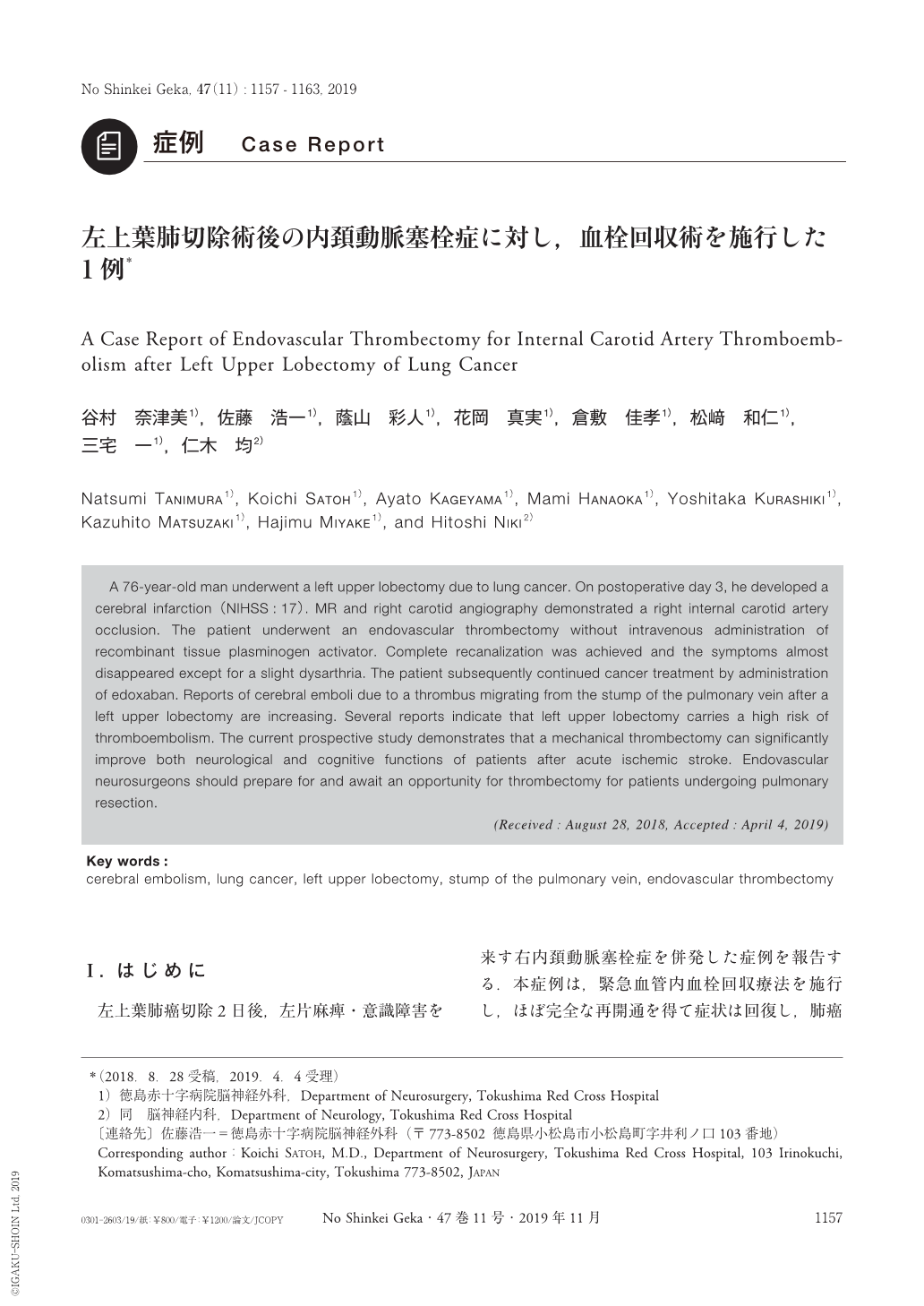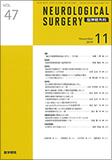Japanese
English
- 有料閲覧
- Abstract 文献概要
- 1ページ目 Look Inside
- 参考文献 Reference
Ⅰ.はじめに
左上葉肺癌切除2日後,左片麻痺・意識障害を来す右内頚動脈塞栓症を併発した症例を報告する.本症例は,緊急血管内血栓回収療法を施行し,ほぼ完全な再開通を得て症状は回復し,肺癌治療を継続した.左上葉切除後の肺静脈断端血栓による血栓塞栓症の報告は増加しており,その機序も確認されつつある.近年,脳梗塞急性期の血栓回収療法が一般的治療として広まっている.肺切除直後でrecombinant tissue-type plasminogen activator(rt-PA)静脈内投与禁忌となる今回のような状況では,血管内治療を含めた対応に関し,術前からの体制整備が必要な時代になっており,若干の文献的考察を加えて報告する.
A 76-year-old man underwent a left upper lobectomy due to lung cancer. On postoperative day 3, he developed a cerebral infarction(NIHSS:17). MR and right carotid angiography demonstrated a right internal carotid artery occlusion. The patient underwent an endovascular thrombectomy without intravenous administration of recombinant tissue plasminogen activator. Complete recanalization was achieved and the symptoms almost disappeared except for a slight dysarthria. The patient subsequently continued cancer treatment by administration of edoxaban. Reports of cerebral emboli due to a thrombus migrating from the stump of the pulmonary vein after a left upper lobectomy are increasing. Several reports indicate that left upper lobectomy carries a high risk of thromboembolism. The current prospective study demonstrates that a mechanical thrombectomy can significantly improve both neurological and cognitive functions of patients after acute ischemic stroke. Endovascular neurosurgeons should prepare for and await an opportunity for thrombectomy for patients undergoing pulmonary resection.

Copyright © 2019, Igaku-Shoin Ltd. All rights reserved.


